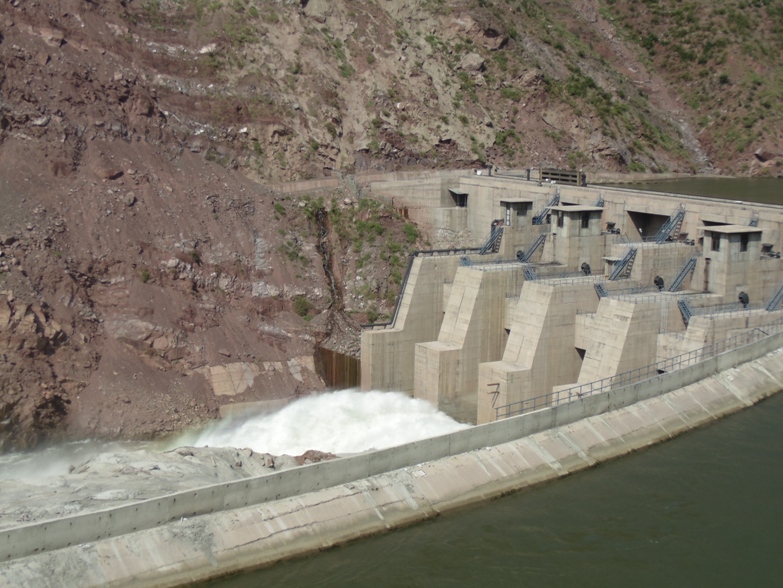Large hydropower projects, which mean hydropower projects of installed capacity 25 mw or more, will now be considered as part of renewable energy. The Union Cabinet recently approved a proposal to this effect. So far, hydropower projects of capacity up to 25 mw only were being considered as part of renewable energy. As a corollary, large hydropower projects would now be included as part of non-solar renewable purchase obligations (RPO). Hydropower projects of capacity up to 25 mw are termed as small hydropower (SHP) and are already eligible for non-solar RPOs.
Important implications of this move are:
- Tariff rationalization measures including providing flexibility to the developers to determine tariff by back loading of tariff after increasing project life to 40 years, increasing debt repayment period to 18 years and introducing escalating tariff of 2 per cent
- Budgetary support for funding flood moderation component of hydropower projects on case to case basis
- Budgetary support for funding cost of enabling infrastructure i.e. roads and bridges on case to case basis as per actual, limited to Rs.1.5 crore per mw for up to 200 mw projects and Rs.1 crore per mw for projects above 200 mw
The rationale behind including all forms of hydropower under renewable energy is to promote the sector, which has been languishing for several years. Despite having huge potential, India is yet to move anywhere closer to exploiting it. According to statistics available with Central Electricity Authority (CEA), India’s hydropower potential, from large projects, stood at 1,45,320 mw. Out of this, as much as 64.5 per cent lay untapped, as of December 31, 2018. Most of India’s potential is concentrated in the upper reaches of the Himalayas the northeast. Four states—Jammu & Kashmir, Uttarakhand, Himachal Pradesh and Arunachal Pradesh—accounted for nearly 70 per cent of the country’s total hydropower potential.
Over the past decade, only around 10,000 mw of new hydropower capacity has been added, making it one of the worst phases for this clean energy source. The share of hydropower in India’s total capacity has tumbled from as much as 50 per cent in the 1960s to barely 13 per cent, as of March 2018.
Despite being a zero fuel cost energy source, tariffs of hydropower have been higher. This is because of loading of cost of flood moderation and enabling infrastructure in the project cost. Due to high tariffs, especially in the initial years of operation, distribution companies are reluctant to enter into power purchase agreements.
The Union Cabinet has now decided to provide budgetary support for flood moderation cost and enabling infrastructure cost and tariff rationalization measures to reduce tariff and thus the burden on the consumer.
| India’s hydropower potential: Major states | |||||
| (MW) | |||||
| Indentified | Under | Under | Untapped | potential | |
| potential* | Operation | Construction | (MW) | (%) | |
| Arunachal Pradesh | 50,064 | 515 | 2,744 | 46,805 | 93.5 |
| Himachal Pradesh | 18,540 | 9,809 | 1,885 | 6,846 | 36.9 |
| Uttarakhand | 17,998 | 3,756 | 1,490 | 12,752 | 70.9 |
| Jammu & Kashmir | 13,543 | 3,449 | 1,936 | 8,159 | 60.2 |
| Karnataka | 6,459 | 3,644 | 0 | 2,815 | 43.6 |
| All India | 1,45,320 | 40,614 | 10,974 | 93,733 | 64.5 |
| *relates to projects of capacity 25 mw or above | |||||
| Source: Central Electricity Authority | |||||
The need for hydropower
Besides being environment friendly, hydropower has several other unique features like ability for quick ramping, black start, reactive absorption etc. which make it ideal for peaking power, spinning reserve and for grid balancing and stability. Further, hydropower also provides water security, irrigation and flood moderation benefits, apart from socioeconomic development of the entire region by providing employment opportunities and boosting tourism etc.
The importance of hydropower is increasing even more as the country has targeted to add 160 GW of intermittent solar and wind power by 2022 and 40 per cent of the total capacity from non-fossil fuel sources by 2030 to honour its Nationally Determined Contribution for Climate Change. Another clear benefit would be of having a stable grid considering 160 GW capacity addition by 2022 from infirm sources of power like solar and wind.
Employment generation
As most of the hydropower potential is located in the higher reaches of Himalayas and North- East Region, it will result in overall socio-economic development of the region by providing direct employment in the power sector. It will also provide indirect employment/ entrepreneurial opportunities in the field of transportation, tourism and other small scale businesses.

